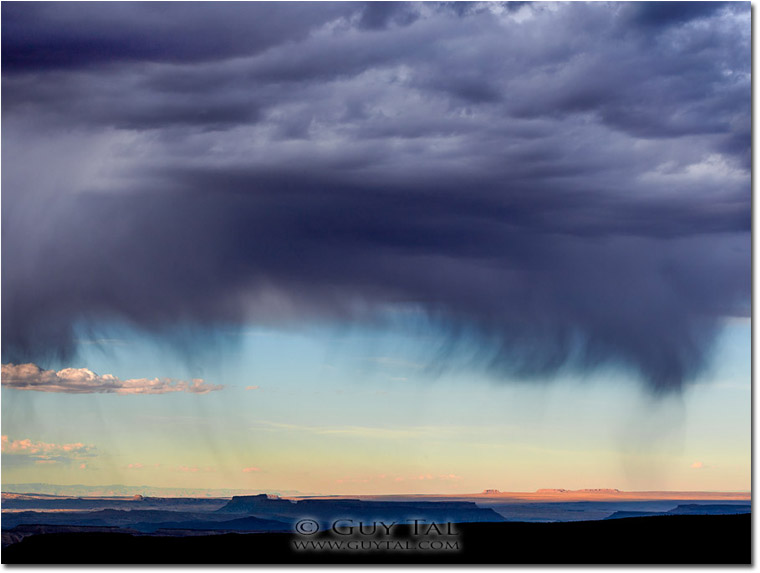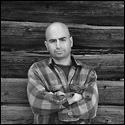It feels, sometimes, as though invisible winds carry ideas and realizations among people of like minds. Telling my stories is the driving force behind my work. It is the reason I do what I do and live as I do and, I suppose, think as I do. Beyond merely recounting random events, the desire to share stories of my own experiences is also what drives me to seek such experiences, many of which end up transforming me in profound ways far beyond the images inspired by them.
It seems I am not alone. Recently I had the pleasure of presenting at the Sedona Photo Fest, where I shared some of my stories and the way they guided my life. The previous day I sat through an excellent presentation by Floris van Breugel, where he, too, talked about his stories and the telling of stories through images. Not only did I enjoy his wonderful work, but I felt somewhat comforted that Floris, who is much younger than I am, could appreciate many of the joys of living as a creative wanderer in a world where many may never experience life as I have. Talkin’ ’bout my generation.
I like to imagine the life experiences of other people. I do so often when visiting ancient dwellings, trying to imagine the daily routine of those who lived there; what it was like to be a child growing up there, in a world without industry and electronics and motorized vehicles. I try not to romanticize too much. Modern life, I’m sure, is much easier in many ways than it was even decades ago. I also imagine others’ lives when encountering fellow travelers while on the road: the woman and dog sleeping in the back of an old sedan in a rest stop on a cold winter night in rural Nevada; the bleary-eyed young couple eating at a roadside diner, their U-Haul parked outside, en route to new places and new possibilities and new lives; the young blonde in a convertible yellow Volkswagen zooming around the curves of a remote mountain road; or the hitchhiker in the middle of the desert, likely not aware of a sign a couple of hundred yards away warning motorists not to pick up hitchhikers due to the proximity of a jail. I have dozens of them carved into my memory. What I don’t know, I try to guess and fill in.

Of course, there are also the solitary experiences – stories of wildness and wilderness: a face-off with a bighorn ram in a narrow canyon, the surreal shimmering of deserts in the summer, the scents of sagebrush after a first rain or of mountain meadows in bloom, glowing aspen groves on a perfectly silent and chilly autumn morning, arriving at a prominent summit after a long scramble as the last light of the day is fading, the crackle of campfires and the gurgle of streams and the whisper of breeze in forest canopies, and so many more.
I think of people who lived in the very house I occupy and how different their lives were from mine. And of the experiences of my childhood, before color television and computers and the Internet. A life I’m sure is familiar to some readers but that many living today may never be able to experience; a life where one can find perfect silence, spend hours in a field or forest or desert with nothing and no one for company other than natural inhabitants; a life where most time was spent out of doors and most interactions occurred in person. These multi-dimensional and multi-sensory experiences now reduced to virtual worlds of sensory deprivation; often accompanied with apathy or even fear of wild places, of relying on one’s own faculties to partake in the things that make life itself possible – the things we evolved to find beautiful and meaningful, yet opted to give up in exchange for comforts.
And I worry. Before my eyes I see the things that made my own life so rewarding rapidly disappearing, replaced with ever more confined spaces, ever more controlled environments, ever more generic and predictable lives, and ever fewer possibilities for mystery and discovery and thrill. I worry not just about the kind of world we leave for our children, but also about the kind of children we leave for our world.
I consider myself fortunate to have the freedom to venture into places where humans may never have been, where discoveries still await. I appreciate being able to grow some of my own food, and to wake up to silent mornings interrupted only by the chirping of birds, and to see a plethora of celestial lights on a dark night, free of light pollution. The day is not far when lives such as mine may be considered as primitive as those of cave dwellers; yet I am sure cave life offered profoundly moving experiences, too, that are no longer possible. There will soon be a time when we will be looked upon with disdain for having used potable water to wash and to adorn our dwellings with flowers just because they are beautiful. If futurists are to be believed, the next century will turn the vast majority of humans into transient resources for industry, crammed in tiny spaces in large cities centered around airports. Part of me, I regret to say, takes small comfort in mortality.
Each country can point to the achievements and failures of its own generations. Here, in the United States, my predecessors – the baby boomers – brought with them economic prosperity, civil rights, Vietnam, television and Rock & Roll. According to a model put together by Strauss and Howe, the boomers were an idealist generation whereas mine – Generation X – is a reactive one. I fear that our reaction will be remembered not as a positive one altogether. We instigated the personal computer revolution and brought the Internet to the public; we saw the end of the Cold War; we also brought consumerism and greed to levels never before seen in human history. We are the generation who learned about the evils of pollution, the risk of climate change, the dissonance of a growth-based economy, and the rise of global financial powers “too big to fail.” We may well be remembered for being the last generation who still knew life before gadgetry, who saw the changing tides and could still do something about it - but didn’t.
Tell your stories with passion and eloquence. Keep alive in them the things and experiences and revelations that may not survive otherwise. Of the legacies we leave, very few may ultimately be more important than letting those who will follow know what life was like before the era of cramped confinement and social media. Tell stories of the thrill of experiencing the world in person, off line, and away from the cacophony of cities. Make them realize that growth is not the same as prosperity, that riches come in forms not measurable in money, and that there is more magic in real reality than in any artifice of human conception.
Guy Tal - NPN 440
|
 Guy Tal is a professional photographer and author residing in the state of Utah, in the heart of a unique and scenic desert region known as the Colorado Plateau. Guy teaches and writes about the artistic and creative aspects of photography and guides private workshops and individuals seeking the beauty and solitude of the canyon country. More of his works and writings can be found on his web site and blog at guytal.com. You may also follow Guy on Facebook or Twitter.
Guy Tal is a professional photographer and author residing in the state of Utah, in the heart of a unique and scenic desert region known as the Colorado Plateau. Guy teaches and writes about the artistic and creative aspects of photography and guides private workshops and individuals seeking the beauty and solitude of the canyon country. More of his works and writings can be found on his web site and blog at guytal.com. You may also follow Guy on Facebook or Twitter.
Guy is the author of three e-books, Creative Landscape Photography, Creative Processing Techniques, and Intimate Portraits of the Colorado Plateau.